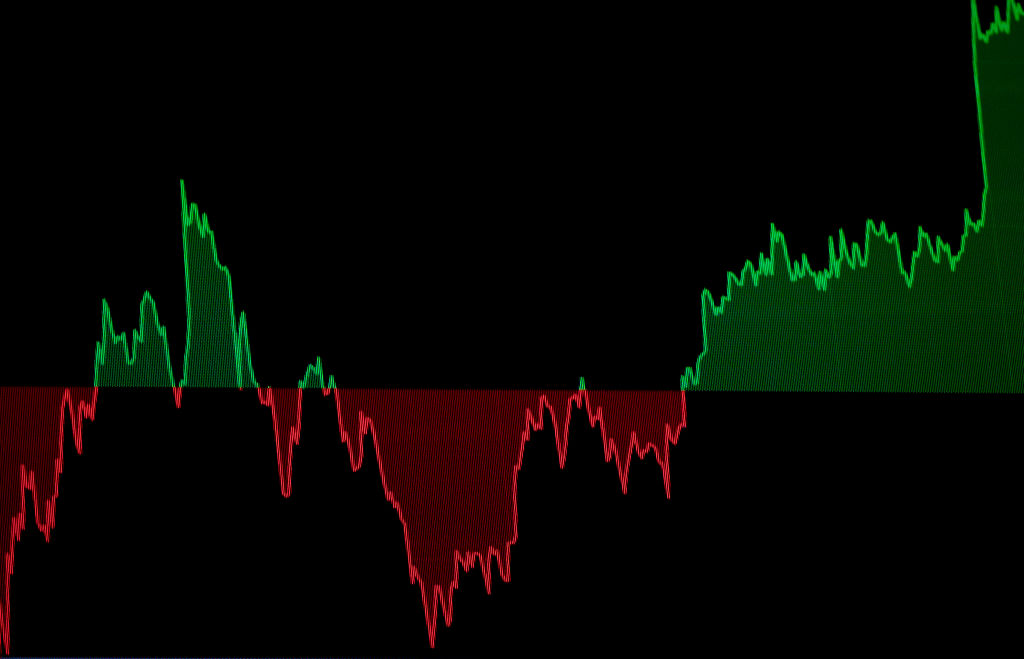Stable Funds in Chaotic Times
These funds deliver predictable results for retirement savers.
When the financial crisis ravaged the stock market and many parts of the bond market, stable-value funds stood out with their combination of modest, positive returns and their, well, stability. As a result, retirement savers clamored for these steadfast funds and the security they offer.
The percentage of assets invested in stable-value funds in large-company 401(k) plans that offer a stable-value option rose from 20% in November 2007 to 36% in March 2009, according to Hewitt Associates, a benefits-consulting firm. Although the total amount invested in stable-value funds has fallen as stocks have recovered, such funds retain more than $642 billion in assets, which makes them the largest category of fixed-income investment in 401(k) plans.It's easy to see why investors fled to stable-value funds during the bear market. From the stock market's peak on October 9, 2007, through its trough on March 9, 2009, Standard & Poor's 500-stock index lost 55%. During the same period, the average stable-value fund returned a respectable 7% -- with little of the drama that played out in the stock market. In the first six months of 2009, the average stable-value fund returned 2.1%, while the typical intermediate-term bond fund earned 5.7% and the average money-market fund made a paltry 0.1%. The S&P 500 gained 3.0% in the first half, but not before losing 25% through March 9.
Stable-value funds have performed impressively over longer periods, too. The funds returned an annualized 5.5%, on average, over the past ten years through June 30, blowing away the 2.9% annualized return of the average taxable money-market fund. The average taxable intermediate-term bond fund did worse, returning 4.4% annualized over the ten-year period -- and it did so with considerably more volatility. Inflation, meanwhile, averaged 2.6% a year.
From just $107.88 $24.99 for Kiplinger Personal Finance
Be a smarter, better informed investor.

Sign up for Kiplinger’s Free Newsletters
Profit and prosper with the best of expert advice on investing, taxes, retirement, personal finance and more - straight to your e-mail.
Profit and prosper with the best of expert advice - straight to your e-mail.
Limited availability
Stable-value funds are available mainly through employer-sponsored retirement plans. Overall, about half of all employees have access to these funds, but only one-third of the retirement plans of small and midsize businesses provide a stable-value option. As a safe haven that provides inflation-beating returns, a stable-value fund could play an important role in your portfolio. "When you open your 401(k) statement, it should be the one fund that is always in green," says John Sturiale, the manager of a stable-value fund offered by Charles Schwab.
But as with everything else in investing, there's a catch. Stable-value funds may not be quite as stable as their name implies.
Although they are often compared to money-market funds and intermediate-term bond funds, stable-value funds are more complex. They differ in both the way they invest and how they handle risk.
Stable-value funds normally invest in short- to medium-maturity bonds, including government, corporate and mortgage securities. The bonds these funds buy are typically due in two to four years. By contrast, the average maturity of the IOUs in a money-market fund may not exceed 90 days.
[page break]
Under normal bond-market conditions, it is the longer maturity of the debt held by stable-value funds that allows them to deliver higher returns than money-market funds. But the longer maturities also increase risk. The $1 share price of money-market funds is virtually impervious to higher interest rates, but longer-term bonds typically fall in value when rates rise.
To offset the greater risk of prin-cipal loss from longer-maturity bonds, stable-value funds purchase insurance "wrappers" to even out the gains and losses in their portfolios. These wrappers, which are not used by conventional bond mutual funds, help stable-value funds maintain their $1 share price.
About a dozen banks and insurance companies provide wrap contracts to stable-value funds. American International Group, the poster child for Uncle Sam's financial-rescue program, is a major player, insuring about $7 billion of the $100 billion in stable-value assets tracked by the Hueler Cos., a Minneapolis research firm. But don't fret if AIG insures your stable-value fund. The company is exiting the business, and fund managers are replacing AIG contracts as they expire with contracts from other insurance companies.
The typical stable-value fund buys wrap contracts from three to five providers to minimize exposure to any single insurer. Many of the contracts contain provisions that protect the fund in the event a single provider collapses. Essentially, all of the providers agree to cover the uninsured portion of the portfolio for a short period -- typically 90 days -- until a manager can find more insurance. For example, if a fund has five wrap providers and one of them drops out, the other four would agree to increase the percentage of assets covered from 20% to 25%.
But the insurance that covers stable-value funds only goes so far. The protection the funds offer can disappear in the wake of bankruptcies, layoffs and other events that can trigger mass withdrawals by plan participants. Employers and stable-value fund managers can usually negotiate coverage that allows investors to withdraw their money without taking a loss. But these talks don't always pan out, and insurers are less willing to enter contracts in times of financial stress.
First victim
The financial meltdown took its toll last December on one high-profile stable-value fund -- the first ever to lose money. After Lehman Brothers' abrupt collapse, many of the firm's former employees withdrew money from their 401(k) accounts, forcing the plan's stable-value fund to sell bonds at a loss. In addition, contracts with three of the Lehman fund's seven insurers specified that their wrappers would become invalid in the event of bankruptcy, and Lehman didn't have time to negotiate new ones.
The fund, managed by Invesco, declined 1.7% in December 2008, although it still gained 2.2% for all of 2008. An Invesco spokesman says that all of the fund's assets are now insured against loss and that the December write-down is likely to be a one-time event.
Lehman Brothers' stable-value fund wasn't the only victim of the Wall Street meltdown. A stable-value fund in Chrysler's deferred-compensation plan for white-collar workers paid out only 89 cents on the dollar when the fund was liquidated earlier this year. Because the retirement plan was not subject to the normal protections of the Employee Retirement Income Security Act, the fund had to liquidate assets to pay creditors before the company could enter into bankruptcy proceedings. This was highly unusual because the law protects most defined-contribution retirement-plan assets when an employer files for bankruptcy.
[page break]
At least one money manager ponied up to make stable-value-fund investors whole. State Street Corp. contributed more than $610 million in 2008 to stable-value funds under its management because of investment losses, according to company filings. Plus, a State Street subsidiary purchased $2.5 billion in bonds from State Street stable-value funds to raise the quality of the portfolios so that the funds wouldn't lose their insurance coverage.
Although rare, events such as the Chrysler and Lehman markdowns and the State Street rescue show that the protection provided by stable-value funds isn't foolproof. Still, don't assume your stable-value fund is headed for trouble. Employers are taking a closer look at the stable-value funds in their retirement plans to reduce the chance that their offerings will stumble, says Pam Hess, director of retirement research at Hewitt Associates.
One way fund managers are doing that is by upgrading the quality of their portfolios. Concerned about the health of corporate-bond issuers during the current recession, managers are holding more Treasury and government-agency bonds than in the past, says Sue Graef, head of stable-value investing at the Vanguard Group. That lowers a fund's exposure to credit risk -- the risk that a bond issuer could go belly up -- but also leads to lower returns because government debt yields less than corporate bonds.
Fund managers are also keeping more cash on hand. One reason is that they need cash to pay up when investors demand their money. Just as they were flooded with an influx of cash during the financial crisis, managers of stable-value funds worry that money will flow back out just as quickly as markets improve. Investors yanked $790 million out of stable-value funds from April through June, according to Hewitt.
Rising insurance costs
In addition, some managers can't invest the excess cash because there aren't enough wrap providers to supply the needed insurance. And it's not just a matter of finding a wrap provider, it's paying for the protection -- the cost of insurance has soared. Before the financial crisis, the typical wrap fee was 0.08% of a stable-value fund's assets. Now, it costs 0.16% of assets to insure a stable-value portfolio.
Although stable-value funds offer higher returns than money-market funds do, they come with some restrictions. Stable-value funds do not allow you to transfer money directly to competing investment options, such as money funds or short-term or intermediate-term bond funds. Instead, you must move money from a stable-value fund into a noncompeting fund, such as a stock fund, for at least 90 days. You can minimize the impact of the 90-day lockup by directing new retirement-plan contributions to the fund of your choice.
If you lack a stable-value option in your retirement plan, ask your employer to add one. Limits in the capacity of wrap insurers to cover stable-value portfolios prevented plans from adding such options during the financial crisis. But as markets recover, plan sponsors should be able to add stable-value funds if they wish.
Stable-value funds have a lot of merits, but you can't count on them to make you rich. Don't confuse a stable-value fund with a growth fund or even a fund that seeks to combine growth with income, says Sue Walton, a senior consultant at Watson Wyatt. "It is the place to go for a steady return on your 401(k) investment." Investors typically allocate about 15% to 20% of their assets to a stable-value fund, according to the Stable Value Investment Association. Depending on your age and goals, you should invest a chunk of the balance of your money in stock funds. With retirements lasting 20 years or more, you still need to invest for growth to combat future inflation.
[page break]
Profit and prosper with the best of Kiplinger's advice on investing, taxes, retirement, personal finance and much more. Delivered daily. Enter your email in the box and click Sign Me Up.
-
 Don't Waste Your Money on Bad Gifts. Try This Instead.
Don't Waste Your Money on Bad Gifts. Try This Instead.Holiday Happiness These strategies, backed by behavioral finance, can help you find presents that your loved ones will truly enjoy.
-
 5 Unique Book-Inspired Trips Across America
5 Unique Book-Inspired Trips Across AmericaThere are five great trips to take across America that can immerse you in the culture of your favourite books.
-
 Dow Soars 493 Points in Fed-Fueled Bounce: Stock Market Today
Dow Soars 493 Points in Fed-Fueled Bounce: Stock Market TodayNew York Fed President John Williams struck a dovish tone Friday, which eased Wall Street's worries over a potential December pause.
-
 Dow Erases 717-Point Gain to End Lower: Stock Market Today
Dow Erases 717-Point Gain to End Lower: Stock Market TodayThe main indexes started the day with solid gains, but worries of an AI bubble weighed on stocks into the close.
-
 S&P 500 Snaps Losing Streak Ahead of Nvidia Earnings: Stock Market Today
S&P 500 Snaps Losing Streak Ahead of Nvidia Earnings: Stock Market TodayThe Dow Jones Industrial Average also closed higher for the first time in five days, while the Nasdaq Composite notched a win too.
-
 Dow Trims Its Loss to 498 Points: Stock Market Today
Dow Trims Its Loss to 498 Points: Stock Market TodayMarkets are wondering more and more about returns on the enormous amounts of capital hyperscalers are investing in AI.
-
 Dow Falls 557 Points to Start NVDA Week: Stock Market Today
Dow Falls 557 Points to Start NVDA Week: Stock Market TodayThe Oracle of Omaha saw growth and value in certain corners of the stock market during the third quarter.
-
 Investors Buy the Nasdaq's Big Dip: Stock Market Today
Investors Buy the Nasdaq's Big Dip: Stock Market TodayStocks are up and down again to end an up-and-down week ahead of big earnings announcements and the eventual return of regular economic data flow.
-
 Dow Dives 797 Points as Government Opens: Stock Market Today
Dow Dives 797 Points as Government Opens: Stock Market TodayThe process of pricing and re-pricing realities old and new never stops, and next week promises to be at least as exciting as this week.
-
 Dow Climbs 327 Points, Crosses 48,000: Stock Market Today
Dow Climbs 327 Points, Crosses 48,000: Stock Market TodayMarkets are pricing the end of the longest government shutdown in history – and another solid set of quarterly earnings.